NetEase takes the three pilot cities of Shanghai, Shenzhen and Hangzhou as new energy vehicles to conduct surveys as a sample, aiming to reveal as truly as possible the true living conditions of new energy vehicles that landed in these three places.
Prior to this, we may wish to highlight the transcript of the first anniversary of the implementation of the new energy policy. According to data obtained by Netease Automotive from the Ministry of Industry and Information Technology, it was concluded that in the first half of this year, it was selected in the “catalogue of recommended models for the promotion and application of energy-saving and new energy vehicles†in 5 batches, among which 35 companies published a total of 65 The models include new energy commercial vehicles and passenger cars.
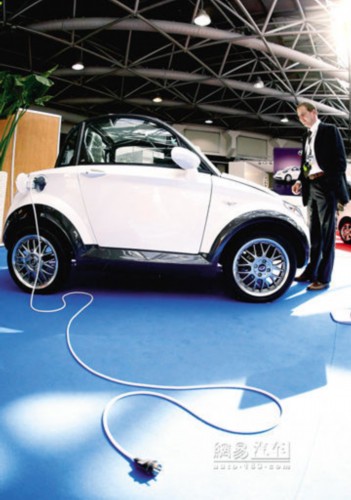
According to the “2010 Automobile Industry Economic Operation Report†released by the Ministry of Industry and Information Technology, as of the end of 2010, a total of 190 models of 54 automobile manufacturers were included in the “Catalogue of Recommended Models for Energy Saving and New Energy Vehicles, Demonstration, Promotion and Application Projectsâ€, 2010. The annual output of the above models is 7181 cars. This means that the 54 car companies entering the catalog produced an average of less than 133 energy-saving and new energy vehicles last year, and the average output of each model was less than 38 units.
The number of transcripts is not bright, so many people think that the commercialization and marketization of electric vehicles is still a dream far away from reality. “The era of electric vehicles is still far away.†Outside the BYD Pingshan Plant in Shenzhen, Mr. Wang, who is a technician in the automotive business division, shook his head and said that many of BYD’s internal technical personnel responsible for the automotive business had expressed the same attitude.
Ren Yong, deputy general manager and senior engineer of Chang'an New Energy Automobile Co., Ltd., said that the real commercialization of new energy vehicles in China is estimated to be around 2015, or even further.
There are also car companies involved in electric vehicle engineering insiders are concerned that the new energy vehicle heat around now is just a kind of impetuous image project, “the country’s existing hundreds of thousands of new energy vehicles, most of which are local governments or cars The purpose of the company's image project is to obtain policy support."
On the subsidy side, according to the Netease Auto Survey, it was learned that some well-informed auto companies excluded the electric cars purchased in private names for research purposes, and deliberately left off the benefits of subsidy, while the rest of the electric vehicle owners got national and local The double subsidy, and in Shenzhen BYD sales shop, is directly sold at a price minus the state subsidies and local government subsidies.
Shanghai: Only 10 of the electric vehicles are mostly on the test board. According to NetEase, the Shanghai Motor Vehicles Center in Jiading was exclusively informed of the trial. As of today, only 10 Shanghai-based electric vehicles have been licensed, mainly Chery and Zhongtai. , China Lifan, BYD models.
In this handful of the 10 vehicles, "only two may be considered purely private purchases," a Jiading motor vehicle center staff told NetEase.
It is understood that although the remaining eight electric vehicles are on the market, they are basically semi-private vehicles that exist due to “experiment†because “these electric vehicles are sold out through half-purchase or subsidies. Their owners also have to undertake regular missions to report back to the relevant agencies on data and issues concerning the use of models,†said the person mentioned to NetEase.
The relevant agencies refer to the national grid, related automobile companies, scientific research institutions and even traffic police departments. The above-mentioned agencies hope to obtain first-hand data from the batch of pure electric vehicle owners and build models for the R&D, manufacturing and operation management of new energy vehicles.
Although there are very few owners who actually buy and use electric vehicles in Shanghai, Shanghai was still wearing the top hat of “China's first international model city for electric vehiclesâ€. Shanghai Jiading District was designated as an international demonstration area for electric vehicles.
Minister of Science and Technology Wan Gang and Shanghai Mayor Han Zheng jointly unveiled the "International Model City". At the same time, "China (Shanghai) International Electric Vehicle Model City Partnership" has formally signed the "Shanghai International Motor Vehicle Model City Declaration".
Taking Jiading as an example, Shanghai released its development plan and implementation plan, saying that in terms of infrastructure, the Jiading Electric Vehicle International Demonstration Zone plans to complete the promotion and application of more than 10,000 electric vehicles by 2012, and build 13,000 charging piles. 15 station/stations and more than two hydrogen stations.
Two clubs, "Enterprise Club" and "User Club", will be established; three exchange platforms will be established: "Shanghai International Electric Vehicle Model City Forum", "Shanghai International Electric Vehicle Exhibition" and "Shanghai International Electric Vehicle Challenge"; The four centers of "Electric Vehicle Model Evaluation Center", "Electric Vehicle Operation Service Center", "Electric Vehicle Test Drive Test Center", and "Electric Vehicle Business Model Innovation Center".
The above "planning" looks very ambitious, but for the moment, an interesting detail just proves that Shanghai's implementation of the new energy strategy has not fallen into detail, so that the electric car owners suffered embarrassment.
According to reports, Zhang Xia, who works at Shanghai Jiading Motor City, bought a Zhongke Lifan pure electric vehicle in early April this year and found that his electric car could not be charged at home. The reason is that her purchase of Zhongfa Lifan Electric Vehicle is based on the DC charging mode. However, around Jiading Automobile City, the charging piles built by the State Grid are all AC charging modes.
Zhang Xia said, “Before the purchase, the manufacturer promised to install a DC charging pile in the home area, but it has not yet been installed. The car is charged with 20 amps of direct current, and the existing 12 amps of AC at home cannot be charged.â€
China Lifan, on the other hand, stated that this was because the State Grid did not fulfill its commitment to build DC charging poles. In this regard, Wu Xiaofei, an expert in the New Energy Automobile Project Team at Tongji University, believes that the most pressing issue now is the introduction of relevant national standards so as to avoid everyone engaging in a set.
“Now enterprises and pilot cities have all been engaged in new energy vehicles. Some of the projects have been hurriedly launched without being clear, and some key policies have not yet been issued.†An industry source expressed concern.
In fact, it is not unreasonable to say that the above-mentioned persons are saying that although Shanghai, which has the highest cap of China's first international model city for electric vehicles, is also a privately-funded pilot city for new energy vehicles, it has yet to introduce new energy vehicle subsidies. policy.
Hangzhou: 25 people bought pure electric vehicles Most of the charging stations are idle On April 11th, a public electric vehicle that suddenly burned in the street makes Hangzhou famous in 20 new energy pilot cities, and it also makes Hangzhou explore The "green road" also suffered a lot of pain.
According to NetEase's visit, although Hangzhou has already introduced a subsidy policy for private purchases of new energy vehicles last year, it can enjoy a government subsidy of up to RMB 123,000. However, most Hangzhou citizens still adopt a wait-and-see attitude toward purchasing electric cars. Hangzhou is still basically the same. Operated as an electric taxi.
However, the accident of spontaneous combustion of an electric vehicle in April caused the operation of Hangzhou New Energy Taxi Co., Ltd. to be basically in a state of stagnation. A person in charge of the company said that the first batch of (electric) taxis, except for the one burned out, All have now ceased operation.
Hangzhou originally planned to achieve the goal of private purchases of 20,000 new energy vehicles by the end of 2012, but for now, this goal is unlikely to be realized. According to He Xiuling, head of the Automotive Industry Division of Hangzhou Economic Commission, only 25 people in the city of Hangzhou have purchased pure electric vehicles.
The birth of the first private electric vehicle license in Hangzhou was a Zhongtai pure electric vehicle purchased by Hangzhou citizen Li Ziqiang for 108,000 yuan. The original price of the car was 220,000 yuan. Counting on state subsidies and manufacturers' profit, Li Ziqiang used only half the price to drive the car back home.
It is understood that Hangzhou residents can buy electric vehicles up to 123,000 yuan in government subsidies, including state subsidies of 60,000 yuan, Hangzhou, the highest subsidy of 60,000 yuan, personal fuel vehicles to buy new energy vehicles additional subsidies of 3,000 yuan. In addition, 60,000 kilometers after the sale or within 3 years, you can also enjoy a charge subsidy of 0.09 yuan per kilometer, and the maximum charge subsidy is 5,400 yuan.
Hangzhou also said that by the end of 2012, the city plans to build 4 centralized charging stations, 38 stations for charging (replacement), 145 distribution centers, and 3500 sets of charging posts. Within a radius of 1 to 2 km, there is a charge and exchange station for the convenience of the car owner.
Even in the future, Hangzhou plans to achieve a radius of one kilometer. New energy vehicles can find quick energy supplements. Even electric car owners can distribute batteries at home.
It is understood that five charging and replacement power stations, including Gucui, Xixi, Chengbei, Chengnan, and West Lake Culture Plaza, have been built in Hangzhou to meet the needs of electric vehicle replacement and replacement. “In the future, all parking lots and commercial centers will have charging and discharging devices. Where the car stops, it can be charged and replaced.†said He Xiuling, Director of the Automotive Industry Division of the Hangzhou Economic Commission.
But what about the actual construction and use of charging stations?
At the end of last year, Netease Automobile visited the National Grid electric car charging station Hangzhou Gucui Station. After entering Gucui Road, along with the striking signage of the electric vehicle charging station of the State Grid Corporation of China, Netease quickly found the charging station.
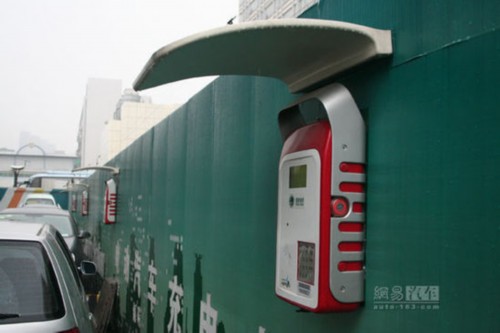
Wall-mounted charging pile
After entering the charging station, it was found that the charging facilities were complete, and the wall-mounted indoor charging piles were neatly installed on the green walls. The charging pile panel was composed of three parts: LCD screen, keyboard, and swipe area. With full self-service operation, users can use the home electric card credit card to charge, using a voltage of 220V and a current of 25 amps.
What is even more eye-catching is that the dedicated charging piles built on the ground of the parking spaces are designed to integrate with the surrounding scenic spots. The design is more beautiful and the types are diverse. The usage method is the same as the indoor charging station. However, in order to meet the needs of fast charging outside, such dedicated charging posts generally have a direct and AC charging function. AC charging is the same as indoor charging. The charging voltage of the DC charging pile can reach 400 volts and the maximum charging power is 4 kilowatts.
In addition, in addition to supporting dedicated charging cards, this charging pile also supports mobile phone charging cards. The charging pile can also provide balance inquiry, password service and so on. The user can set the charging password, which is very safe and convenient. The user's charge is also very convenient, as long as the charging cable is connected, after entering the main menu, click to select the charging method and select the charging method, enter the password to start charging, after the end of the charge, the user brush again card, billing will stop .
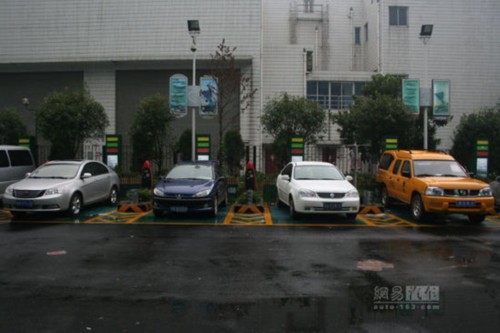
Charging spaces are occupied by traditional cars
Of course, the charging method takes a long time, so there is a faster way for consumers to choose, that is, change the battery. Netease car saw a parked electric vehicle in the charging station yard. The battery was installed in the trunk. When the battery was changed, it only needed to open the trunk.
Even though the infrastructure has already begun to appear in size, Gucui Charging Station has already opened its doors to welcome guests. During the visit, however, we only saw one “guest†(electric car) visiting, and one of the listed charging spaces was occupied by traditional internal combustion engine vehicles. All devices are almost idle...
Shenzhen: The 2000 “Charging†Charging Idles for “Pure†Electric Vehicles is rarely used by Shenzhen as a pilot city for new energy vehicles in the forefront of the country, and is closely related to BYD in its jurisdiction.
This company began selling F3DM dual-mode electric cars in 2009, and advertised itself as a "new energy vehicle leader" company, has been the focus of attention on new energy vehicles across the country. How did BYD, who had developed nearly three years, operate in Shenzhen?
“Now we have orders for F3DM, and there are more than 50 in a month. Many customers like this car, but now production capacity can not keep up, we can not meet their needs.†A Shenzhen BYD dealer's sales staff told NetEase car. When asked what these owners mainly do? The above-mentioned persons frankly stated that there are private business owners, enthusiasts of electric vehicle technology, and company employees. "There are also many people from other places, not even subsidies. We must buy this car."
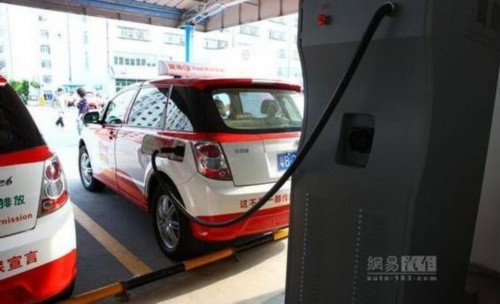
BYD pure electric car E6
Is BYD F3DM so popular with consumers? According to a survey conducted by Netease Auto, most of the private car owners who currently buy F3DM are not purely ordinary consumers. They are the owners of the electric car industry chain, or the R&D personnel of other car companies, and even come from the city of the cottage electric car. Shandong's "Infertility"...
For example, Lin Guojun, the owner of Shenzhen's first F3DM dual-mode electric vehicle, is the head of Shenzhen Babas Technology Development Co., Ltd., and the company's main business is to provide electric vehicle charging terminal products. The statement that "a lot of domestic auto companies bought the F3DM privately and shipped it back to the factory for research" has also been confirmed by BYD's senior officials. "Subsidies at that time (national and Shenzhen local subsidies) have not yet come out." They bought it, they didn't have a card, and they didn't even have to pay a subsidy."
What are the main reasons why ordinary citizens in Shenzhen have a cold attitude towards new energy? A BYD 4S shop sales staff said, "The main reason is that charging is very inconvenient, most people live on the floor, are in more than a dozen layers." He opened an E6 pure electric taxi Master He told NetEase car "Electric vehicles are full of energy and economical, but they can only run for 200 kilometers each time they are charged for one and a half hours, so sometimes they have to refrain from carrying it, and basically they are rushing in the city. If passengers say they want to go farther We can only explain that if there are long distances, there may not be enough power to go back and forth. We must change another vehicle.â€
According to BYD's recent A share prospectus, BYD began selling F3DM in February 2009 and started selling E6 two new energy vehicles in March 2010. During the reporting period, F3DM sold a total of 365 vehicles and achieved sales revenue of 29,440 thousand yuan. In the reporting period, E6 sold a total of 53 vehicles and achieved sales revenue of 13,376 thousand yuan.
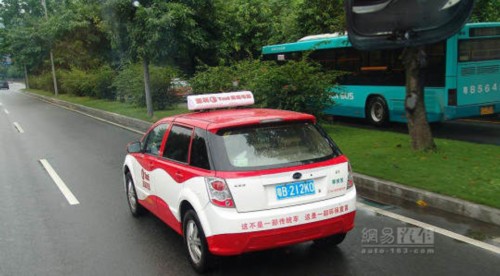
BYD pure electric car E6
After three years of sales of F3DM, its sales figures were only 365 vehicles, and E6 sales did not break through three digits, which is enough to show that BYD's new energy vehicles are far from being commercialized.
In terms of supporting facilities, although China Southern Power Grid has promised that in Shenzhen, as long as users of electric vehicles are purchased, China Southern Power Grid will install two charging piles for it for free, but electric vehicles are still not attractive to ordinary citizens. Jiang Keyi, general manager of Power Supply New Energy Technology Co., Ltd., acknowledged that at present, most of the more than 2,000 built charging stations in Shenzhen are idle, because there is no user at all and “it caused a lot of wasteâ€.
On the other hand, even though BYD in its jurisdiction is still exploring the commercialization of new energy vehicles, the market has not shown enthusiasm, but Shenzhen has already decided to become the “vanguard†of the national new energy vehicle promotion.
According to Shenzhen's plan, by 2012, Shenzhen will promote more than 24,000 new energy vehicles and reach 100,000 by 2015, accounting for approximately 6% of the existing car ownership in Shenzhen. At the same time, Shenzhen will build 12,750 various types of new energy vehicle charging stations.
Titanium screws are also very popular because of their light weight and high strength.They are much stronger than aluminum material screws. But their color is not colorful as aluminum screws because of the feature of titanium material. Different sizes, types and colors titanium screws could be provided. Customized CNC titanium parts could be offered as well according to your drawings and requirements. If you need special packing service including special package boxes, it is also ok for us. Any questions or demand, please feel free to contact us.
Titanium Alloy Screw,Titanium Screw,Colorful Titanium Screws,Head Titanium Screws
Hobby Carbon CNC Technology(Shenzhen) Limited , https://www.hobbycarbon.com